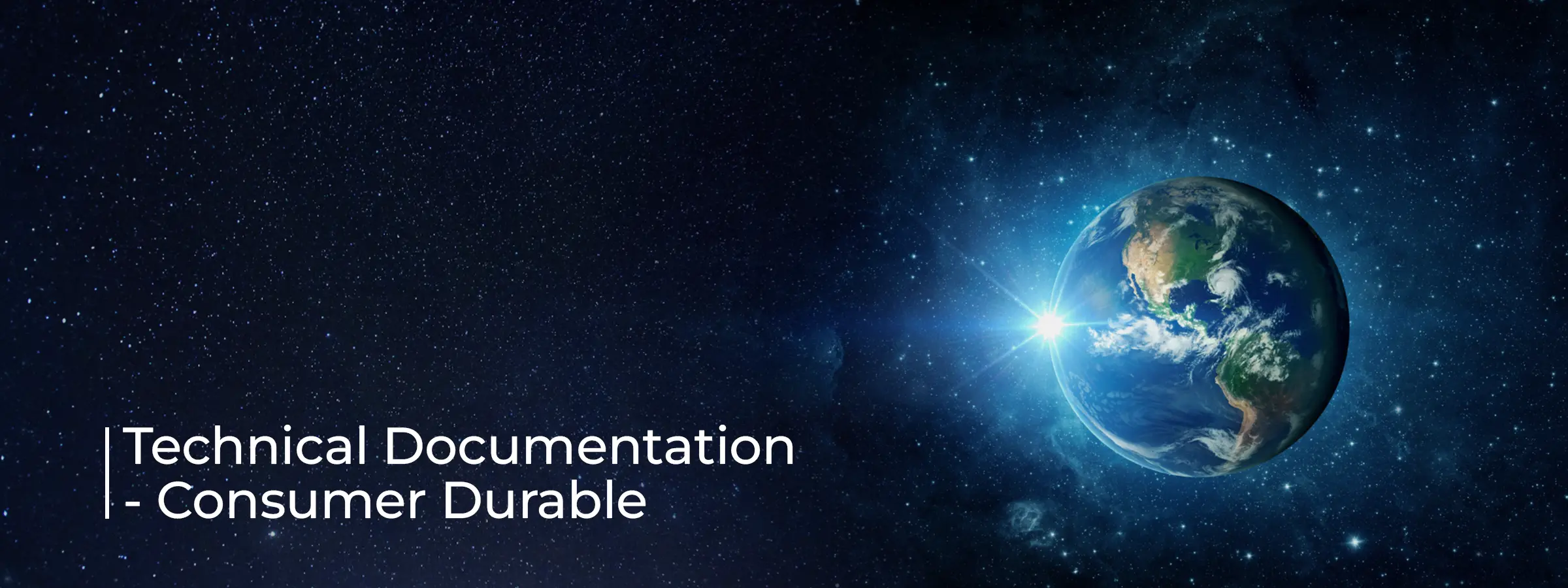
The technical documentation team in the consumer durable company is grappling with significant challenges related to translation, impeding the ability to provide accurate, comprehensive, and accessible product information to global customers. Despite the critical role of multilingual technical documentation in supporting product usage and troubleshooting, the translation processes may be inefficient and prone to errors, leading to delays, customer frustration, and diminished product satisfaction.
• Inconsistent Translation Quality: Translation processes often result in inconsistencies and inaccuracies in translated technical documentation. Translators may struggle to accurately convey technical terminology, specifications, and instructions, leading to confusion and potential safety hazards for users in non-native language markets.
• Time-to-Market Delays: The time-consuming nature of the translation workflow, which involves manual coordination with external translators or agencies, leads to delays in translating and updating technical documentation for new products or product revisions. These delays hinder the ability to meet market demand and may result in missed opportunities to capitalize on product launches or updates.
• Compliance and Regulatory Risks: Technical documentation must adhere to local regulations, standards, and safety requirements in each target market. Failure to translate technical documentation accurately and in compliance with regulatory guidelines may expose the company to legal risks, penalties, and reputational damage.
• Limited Access to Support Resources: Inadequate translation of technical documentation limits access to support resources for customers in non-native language markets. Unclear instructions, mistranslations, and inconsistencies may hinder users' ability to troubleshoot issues, leading to increased support inquiries and dissatisfaction with the product.
• Inefficient Translation Workflow: Translation workflow may lack a streamlined process, resulting in delays and inconsistencies in translated technical documentation. Manual coordination with external translators or agencies leads to bottlenecks, version control issues, and redundant efforts, hampering the ability to keep pace with product updates and releases.
• Quality Control, Accuracy and Consistency: Ensuring the accuracy and consistency of translated technical documentation is paramount for maintaining customer trust and satisfaction. However, quality control measures may be insufficient, resulting in errors, mistranslations, and inconsistencies that can confuse users and undermine the credibility of your products.
• Technical Complexity and Specialized Terminology: Technical documentation often contains complex concepts, specialized terminology, and industry-specific jargon that may be challenging to translate accurately. Inadequate familiarity with technical subject matter among translators can lead to inaccuracies, ambiguities, and misunderstandings in translated content.
• Timeliness of Updates and Revisions: Technical documentation requires regular updates and revisions to reflect product changes, software updates, and user feedback. However, the translation processes often lag behind, resulting in outdated or incomplete translated materials that do not align with the latest product features and functionalities.
• Localization Challenges: Translating technical documentation requires more than mere language translation; it necessitates consideration of cultural nuances, local conventions, and regulatory requirements to ensure relevance and usability in different regions. Failure to address these localization challenges may impede user comprehension and adoption of our products in international markets.
• Develop Multilingual Style Guides and Glossaries: Create comprehensive style guides and glossaries for technical documentation, outlining preferred terminology, writing style, and formatting guidelines for translators to follow. These resources will help maintain consistency and clarity across translated content.
• Conduct Regulatory Compliance Reviews: Work closely with legal and regulatory experts to ensure that translated technical documentation complies with local regulations, standards, and safety requirements in each target market. Conduct thorough reviews and validation checks to mitigate compliance risks and ensure the integrity of translated content.
• Optimize Resource Allocation: Allocate resources strategically to prioritize high-impact translation projects that directly contribute to product safety, usability, and customer satisfaction.
• Conduct Technical Review and Validation: Implement rigorous technical review and validation processes involving subject matter experts and native speakers to ensure the accuracy, clarity, and completeness of translated technical content. Address any technical inaccuracies, inconsistencies, or ambiguities promptly to maintain the integrity of translated documentation.
• Conduct User Testing and Feedback Collection: Engage with users in target markets to gather feedback on the usability and effectiveness of translated technical documentation. Conduct usability testing and iterate on translations based on user input to ensure relevance and comprehension in diverse international markets.
By addressing these key issues and implementing the proposed solutions, the technical documentation team can overcome the challenges associated with translation, enhance the accessibility and effectiveness of translated materials, and ensure consistent and accurate support for customers worldwide.
© 2024 WHITE GLOBE GROUP PVT LTD